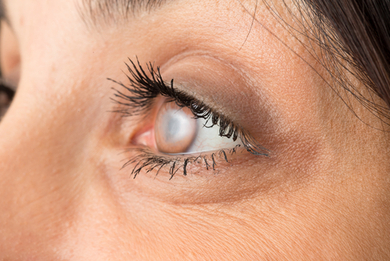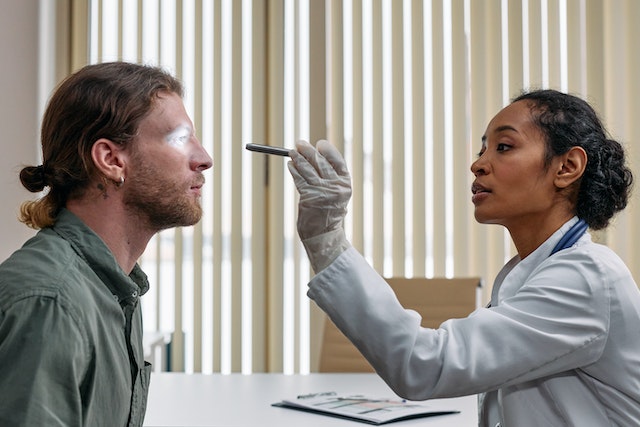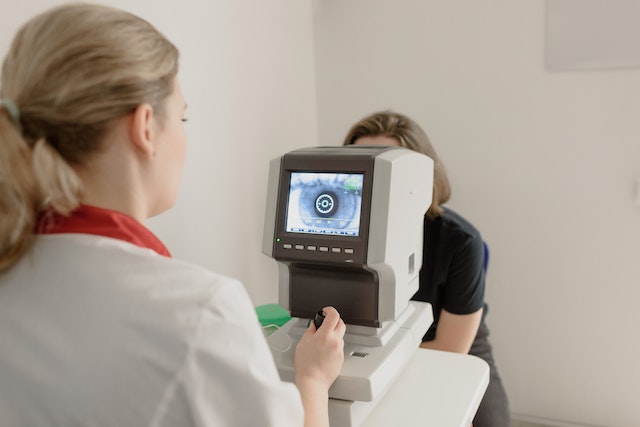When you have a refractive error, your eye’s shape cannot bend light properly, leading to blurred images. Myopia (nearsightedness), hyperopia (farsightedness), presbyopia (loss of near vision with age), and astigmatism are the most common types of refractive errors. These often can be fixed with Lasik eye surgery and are day procedures lasting approximately 10 minutes.
● There is a blurred vision.
● The patient cannot perform tasks that require a close view.
Types of refractive errors
● Myopia (Clear view of nearby objects, while faraway objects are blurry) Nearsightedness, or myopia, is usually inherited and usually discovered in childhood. Myopia development usually occurs during the teenage years as you get older.
● Hyperopia (blurred view of close objects, while clear view distant objects) is an inherited condition called farsightedness. Hyperopia is common in children, but it may lessen with age. As hyperopia progresses, vision can become blurry overall.
● Presbyopia (aging of the eye’s lens)
As we get older, our lenses become more rigid and less flexible. Due to this, the eye loses its ability to focus, and reading at close range becomes more difficult. Myopia, hyperopia, and astigmatism can also accompany this normal aging process of the lens. Watch a video explaining presbyopia(link is external).
● Astigmatism (as the name implies, this is a condition in which the cornea appears to have an asymmetric curvature). A cornea with astigmatism has a more curved front surface than a cornea with an uncurved front surface.
In this case, the vision may look like a distorted, wavy mirror. When an individual suffers from astigmatism, their vision is usually blurry at all distances.
Diagnosis and Testing
Routine eye exams can diagnose refractive errors. In most cases, a patient is asked to read a vision chart while an assortment of lenses are chosen to maximize their vision. There is rarely a need for imaging or testing.
Treatment for Refractive Errors
Refractive disorders are commonly treated with corrective lenses such as eyeglasses or contact lenses. Refractive surgery (like LASIK or SMILE) can also correct some refractive disorders. It is possible to treat presbyopia with over-the-counter reading glasses. Presbyopia cannot be slowed down or reversed.
A person’s vision can be affected by refractive errors. Blurred vision occurs when the eye’s shape prevents light from focusing properly on the retina. Refractive errors are classified as myopia (nearsightedness), hyperopia (farsightedness), and astigmatism. The Lasik procedure corrects these errors and improves vision.
The cornea is the transparent front part of the eye, and Lasik eye surgery uses a laser to reshape it. Using a laser to reshape the cornea can help correct refractive errors and improve vision. Lasik eye surgery is available in four main types: traditional, wavefront-optimized, wavefront-guided, and topography-guided.
Lasik eye surgery is most commonly performed using traditional Lasik. Microkeratomes, mechanical devices used to cut thin layers of cornea, are used during the procedure to create the corneal flap. After the cornea has been reshaped, the surgeon uses an excimer laser to correct the refractive error. Following the reshaping of the cornea, the flap is repositioned and allowed to heal.
Advancements in Lasik for Refractive Errors
This newer type of Lasik eye surgery preserves the cornea’s natural shape to the greatest extent possible. A 3D map of the patient’s eye is generated using advanced imaging technology, allowing the surgeon to customize the laser treatment and minimize the risk of side effects.
Using advanced imaging technologies, wavefront-guided Lasik creates a custom treatment plan for each patient. Patients with higher-order aberrations, which are subtle irregularities in the cornea, may benefit from this type of Lasik. The wavefront-guided Lasik procedure can improve vision by addressing these aberrations.
Among the different types of Lasik eye surgery, topography-guided Lasik is the most advanced. Laser treatment is guided using a detailed map of the patient’s cornea, allowing for highly customized and precise results. For patients who have irregular corneas or have had previous eye surgery, topography-guided Lasik is beneficial.
The Lasik eye surgery procedure is generally considered to be safe and effective, however, there are some risks and complications that may arise. Symptoms may include dry eyes, glare, halos, and infection. The best outcome can be achieved by choosing a skilled and experienced surgeon.
Myopia, hyperopia, and astigmatism can all be corrected with Lasik eye surgery. Lasik eye surgery is available in four main types. Using a laser, each procedure reshapes the cornea, correcting the refractive error and improving vision. Depending on your individual needs and medical history, your eye doctor may recommend a specific Lasik procedure for you if you are considering this surgery. Your vision and quality of life can be significantly improved with Lasik eye surgery if you receive proper care and follow-up all the instructions.





